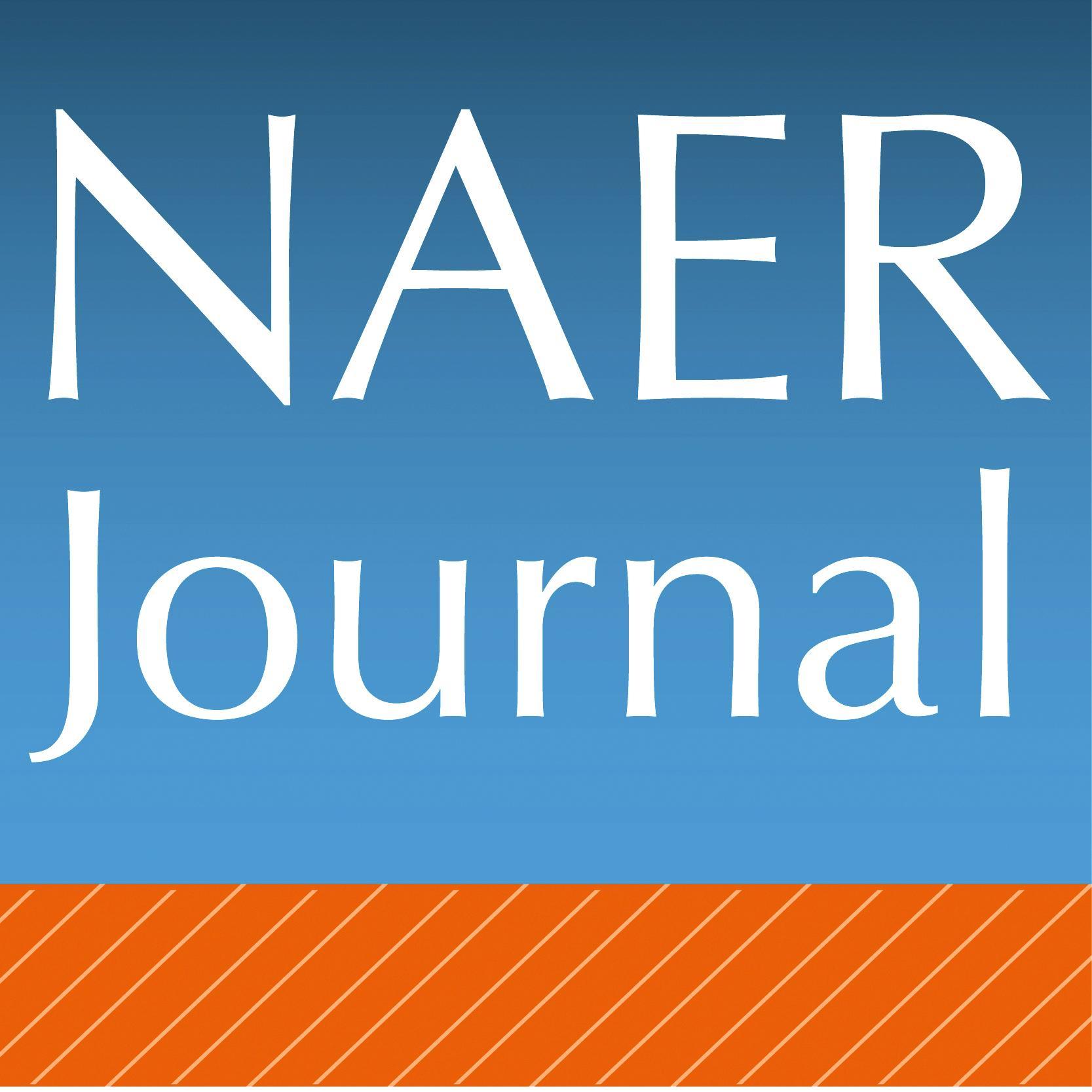El diseño de una investigación: el proyecto RAFODIUN
Agencias de apoyo
- Ministerio de Economía y Competitividad
Resumen
En el presente artículo, como ejemplo de una investigación presentada en el campo de las ciencias sociales, una investigación realizada alrededor del diseño y producción de objetos de Realidad Aumentada (RA). Una tecnología que pensamos que se está convirtiendo en una tecnología emergente, con grandes posibilidades para su uso en la educación, permitiéndonos la posibilidad de enriquecer la realidad física con información digital en tiempo real. Se incluyen las diferentes fases que hemos tenido en cuenta, así como los principales resultados que se van obteniendo.
Descargas
-
Resumen760
-
PDF445
-
Infografía253
Citas
Bacca, J., Baldiris, S., Fabregat, R., Graf, S. y Kinshuk. (2014). Augmented reality trends in education: a systematic review of research and applications. Educational Technology & Society, 17 (4), págs. 133-149.
Barba, R., Yasaca, S. y Manosalvas, C. (2015). Impacto de la realidad aumentada móvil en el proceso enseñanza-aprendizaje de estudiantes universitarios del área de medicina. Investigar con y para la Sociedad, 3, Cádiz: Bubok Publishing, SL, págs. 1.421-1.429.
Barroso, J. y Cabero, J. (2010). La investigación educativa en TIC. Visiones prácticas. Madrid: Síntesis.
Bower, M., Howe, C., McCredie, N., Robinson, A. y Grover, D. (2014). Augmented Reality in education – cases, places and potentials. Educational Media International, 51(1), 1-15.
Bressler, D. M. y Bodzin, A. M. (2013). A mixed methods assessment of students' flow experiences during a mobile augmented reality science game. Journal of Computer Assisted Learning, 29 (6), págs. 505-517.
Bullón, P., Cabero, J., Llorente, M.C., Machuca, M.C., Machuca, G. y Marín, V. (2009). Competencias tecnológicas del profesorado de la Facultad de Odontología de la Universidad de Sevilla. Sevilla: GID.
Cabero, J. y Barroso, J. (2016). The educational possibilities of Augmented Reality. NAER. New Approaches in Educational Research, 5(1), 44-50.
Cabero, J. y García, F. (coords.) (2016). Realidad aumentada. Tecnología para la formación. Madrid: Síntesis.
Cabero, J., Leal, F., Andrés, F. y Llorente, M.C. (2009). La alfabetización digital de los alumnos universitarios mexicanos. Enseñanza & Teaching, 27 (1), 41-59.
Carozza, L., Tingdahi, D., Bosché, F. y Gool, L. (2012). Markerless vision-based augmented reality for urban planning. Computer-Aided Civil and Infrastructure Engineering, 00, págs. 1-16.
Che, Y. (2012). A study of learning effects on e-learning with interactive thematic video. Journal Educational Computing Research, 47(3), 279-292. doi: http://dx.doi.org/10.2190/EC.47.3.c
Cheng, Y., Lou, S., Kuo, S, y Shih, R. (2013). Investigating elementary school students' technology acceptance by applying digital game-based learning to environmental education. Australasian Journal of Educational Technology, 29(1). 96-110.
Chursches, A. (2008). Taxonomía de Bloom para la era digital. Eduteka. Recuperado de http://www.eduteka.org/TaxonomiaBloomDigital.php-
Cubillo, J., Martín, S., Castro, M. y Colmenar, A. (2014). Recursos digitales autónomos mediante realidad aumentada. RIED, 17 (2), págs. 241-274.
Davis, F. (1989). Perceived usefulness, perceived ease of use, and user acceptance of information technology. MIS Quarterly 13 (3): 319–340, doi: 10.2307/249008.
Delgado, C. (2014). Viajando a Ítaca por mares cuantitativos. Manual de ruta para investigar en grado y postgrado. Salamanca: Amarú.
Di Serio, A., Blanca, M. y Delgado, C. (2013). Impact of an augmented reality system on students’ motivation for a visual art course. Computers & Education, 68, 586–596. doi:10.1016/j.compedu.2012.03.002.
Fonseca, D., Redondo, E. y Valls, F. (2016). Motivación y mejora académica utilizando realidad aumentada para el estudio de modelos tridimensionales arquitectónicos. Education in the Knowledge Society (EKS), 17 (1), págs. 45-64.
García, I., Peña, I., Jhonson, L., Smith, R., Levine, A. y Haywood, K. (2010). Informe Horizon: Edición Iberoamericana 2010. Austin, Texas: The New Media Consortium.
Han, J., Jo, M., Hyun, E. y So, H. (2015). Examining young children’s perception toward augmented reality-infused dramatic play. Education Technology Research Development, 63, págs. 455-474. Doi: 10.1007/s11423-015-9374-9.
Ho, L-H., Hung, Ch-L. y Chen, H-Ch. (2013). Using theoretical models to examine the acceptance behavior of mobile phone messaging to enhance parent–teacher interaction. Computers & Education, 61, 105-114. doi: http://dx.doi.org/10.1016/j.compedu.2012.09.009
Huang, W., Huang, W. y Tschopp, J. (2010). Sustaining iterative game playing processes in DGBL: The relationship between motivational processing and outcome processing. Computers & Education, 55, 789-797. doi: 10.1016/j.compedu.2010.03.011
Jamali, S., Fairuz, M., Wai, K. y Oskam, C. (2015). Utilising mobile-augmented reality for learning human anatomy. Procedia-Social and Behavioral Sciences, 197, págs. 659-668.
Jeřábek, T., Rambousek, V. y Wildová, R. (2014). Specifics of visual perception of the augmented reality in the context of education. Procedia-Social and Behavioral Sciences, 159, págs. 598-604. Doi: 10.1016/j.sbspro.2014.12.432
.
Johnson, L., Adams Becker, S., Cummins, M., Estrada, V., Freeman, A., and Hall, C. (2016). NMC Horizon Report: 2016 Higher Education Edition. Austin, Texas: The New Media Consortium.
Keller, J. M. (2010). Motivational design for learning and performance. New York: Springer Science+Business.
Lin, T., Been-Lirn, H., Li, N., Wang, H. y Tsai, Ch. (2013). An investigation of learners' collaborative knowledge construction performances and behavior patterns in an augmented reality simulation system. Computers & Education, 68, págs. 314-321.
Park, S., Nam, M-W- y Cha, S-B. (2012). University students’ behavioral intention to use mobile learning: Evaluating the technology acceptance model. British Journal of Educational Technology, 43, 4, 592-605.
Pedro Carracedo, J. de y Méndez, C. L. M. (2012). Realidad aumentada: una alternativa metodológica en la educación primaria nicaragüense. IEEE-RITA, 7, págs. 102-108.
Prendes, C. (2015). Realidad aumentada y educación: análisis de experiencias prácticas. Pixel-Bit. Revista de Medios y Educación, 46, págs. 187-203.
Proske, A., Roscoe, R. y McNamara, D. (2014). Game-based practice versus traditional practice in computer-based writing strategy training: effects on motivation and achievement. Education Technology Research Development, 62:481–505. doi: 10.1007/s11423-014-9349-2.
Santos, M., Wolde, A., Taketomi, T., Yamamoto, G., Rodrigo, M., Sandor, C. y Kato, H. (2016). Augmented reality as multimedia: the case for situated vocabulary learning. Research and Practice in Techology Enhanced Learning, 11 (4), págs. 1-23.
Sun, H.-M. y Cheng, W.-L. (2009). The input-interface of webcam applied in 3D virtual reality system. Computers & Education, 53 (4), págs. 1.231-1.240.
Tarhini, A., Hone, K. y Liu, X. (2014). Measuring the moderating effect of gender and age on e-learning acceptance in england: a structural equation modeling approach for an extended technology acceptance model. Journal educational computing research, 51(2), 163-184.
Tecnológico de Monterrey (2015). Reporte EduTrends. Radar de Innovación Educativa 2015. Monterrey: Tecnológico de Monterrey.
Teo, T., Beng, Ch., Chai, Ch. y Wong S. (2009). Assessing the intention to use technology among pre-service teachers in Singapore and Malaysia: A multigroup invariance analysis of the Technology Acceptance Model (TAM). Computers & Education, 53, 1000-1009.
Teo, T., y Noyes, J. (2011). An assessment of the influence of perceived enjoyment and attitude on the intention to use technology among pre-service teachers: a structural equation modeling approach. Computers & Education, 57(2), 1645–1653.
Wojciechowski, R. y Cellary, W. (2013). Evaluation of learners’ attitude toward learning in ARIES augmented reality environments. Computers & Education, 68, 570-585.
Wu, H.-S., Wen-Yu, S., Chang, H.-Y. y Liang, J. (2013). Current status, opportunities and challenges of augmented reality in education. Computers & Education, 62, págs. 41-49. http://dx.doi.org/10.1016/j.compedu.2012.10.024.
Yeo, C. T., et al. (2011). The effect of augmented reality training on percutaneous needle placement in spinal facet joint injections. IEEE Transactions on Biomedical Engineering, 58(7), 2031-2037.
Yong, L.A., Rivas, L.A. y Chaparro, J. (2010). Modelo de aceptación tecnológica (TAM): un estudio de la influencia de la cultura nacional y del perfil del usuario en el uso de las TIC. Innovar, 20, 36, 187-204.
Yufeng, L. y Yamanaka, A. (2013). Exploring the effects of multimedia learning on pre-service teachers´ perceived and actual learning performance. Educational Media International, 50 (4), 291-305. doi: 10.1080/09523987.2013.863556
Aquellos autores que tengan publicaciones con esta revista aceptan los términos siguientes :
-
Los autores conservarán sus derechos de autor y garantizarán a la revista el derecho de primera publicación de su obra, el cuál estará simultáneamente sujeto a la Licencia Creative Commons Atribución no comercial compartir por igual 4.0 Internacional que permite compartir, copiar y redistribuir el material en cualquier medio o formato y adaptar, remezclar, transformar y construir sobre el material en los siguientes términos:
Reconocimiento - Debe dar el crédito apropiado, proporcionar un enlace a la licencia, e indicar si se han realizado cambios. Puede hacerlo de cualquier manera razonable, pero no de una manera que sugiere que el licenciante o su uso hace suya. No comercial - No puede utilizar el material con fines comerciales. Compartir bajo la misma - Si remezcla, transformar o crear sobre el material, se debe distribuir sus contribuciones bajo la misma licencia que el original. -
Los autores podrán adoptar otros acuerdos de licencia no exclusiva de distribución de la versión de la obra publicada (p. ej.: depositarla en un archivo telemático institucional o publicarla en un volumen monográfico) siempre que se indique la publicación inicial en esta revista.
-
Se permite y recomienda a los autores difundir su obra a través de Internet (p. ej.: en archivos telemáticos institucionales o en su página web) antes y durante el proceso de envío, lo cual puede producir intercambios interesantes y aumentar las citas de la obra publicada. (Véase El efecto del acceso abierto).
-
En cualquier caso, el Equipo Editorial entiende que las opiniones vertidas por los autores son de su exclusiva responsabilidad.
















